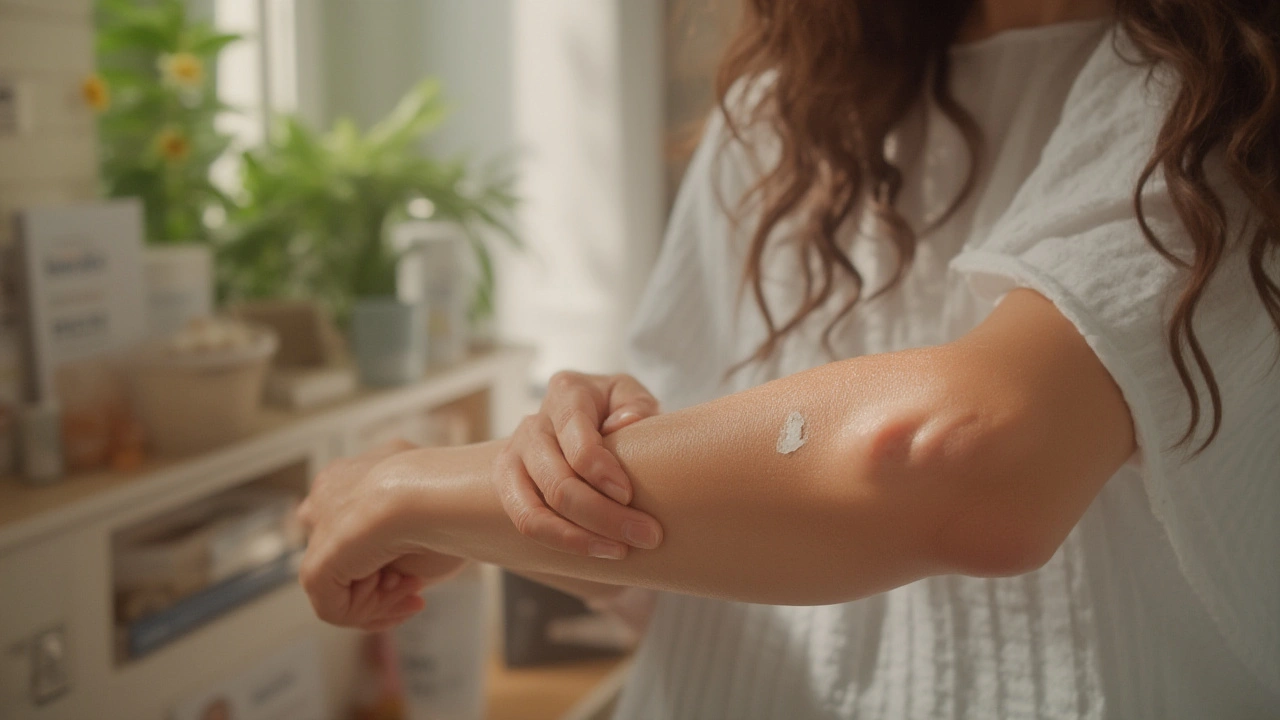Understanding Skin Inflammation: Triggers, Symptoms, and Everyday Fixes
Red, itchy, or sore skin can wreck your day. Skin inflammation is more common than you think, and it’s not just about a rough patch or a random rash. It shows up in so many ways—from mild redness after too much sun to chronic conditions like rosacea or lupus.
So, what’s really going on? At its core, inflammation is your body’s way of dealing with an attack—be it from bacteria, an autoimmune mix-up, or just a little too much sun. You might spot swelling, heat, or a burning feeling. Some folks get a rash, others deal with scaly or stiff patches. Rosacea patients know all about flushing or that telltale red face—especially after being outside or eating spicy food. Discoid lupus can give you flaky, coin-shaped red patches. Sunburn? That’s classic inflamed skin, too.
But what makes it worse? Triggers depend on your body and the type of inflammation. Sun exposure tops the list, especially if you're prone to rosacea or recently had a flare-up. Hot or spicy foods, stress, strong winds, or harsh skincare products can set you off. And for some, an underlying health issue like lupus or allergies makes things more complicated. Even something as simple as the wrong sunscreen can mean trouble if you’re sensitive.
What can you actually do about it? First, figure out your triggers by watching what sets off redness or soreness. Mineral sunscreens with zinc oxide or titanium dioxide are friendlier to sensitive, easily inflamed skin. Products with calming ingredients—like niacinamide or thermal spring water—can offer relief. And skip harsh scrubs or alcohol-based toners, especially after sun exposure.
For folks with rosacea, sticking to a simple, gentle skincare routine works best. Apply moisturizer regularly, avoid perfume-loaded products, and always wear SPF if you’re in the sun. Doctors often suggest short contact with cool water or a cold compress to calm flare-ups. If lupus is behind your inflammation, specialized advice is essential. Dermatologists tend to suggest topical steroids for sudden rashes or specific prescription creams for long-term management.
And if you’re hit with severe sunburn? Keep it basic: cool showers, fragrance-free lotion, and loads of hydration. But skip petroleum-based ointments—they can trap heat and make things worse. If you spot blistering or a spreading rash with fever, get a doctor involved right away. Trust your gut; pain that feels wrong probably is.
New trends? Smart inhalers and AI tech are making waves in asthma care, but the world of inflammation is seeing more high-tech sunscreens and over-the-counter creams with science-backed ingredients. People are even looking to balance their diet to help manage symptoms—think less processed food and fewer triggers like hot drinks.
Bottom line, skin inflammation is complicated but manageable. You don’t need a suitcase of fancy products—just clear strategies, a little patience, and the right advice tailored to your situation. For the latest research, fresh tips, and real talk about managing your skin, you’ll find what you need right here on PharmaInsight.
Temovate: Uses, Side Effects, and Essential Tips for Safe and Effective Use
Discover how Temovate (clobetasol propionate) treats stubborn skin conditions, its potential side effects, safety directions, and expert tips for best use.
Read more
